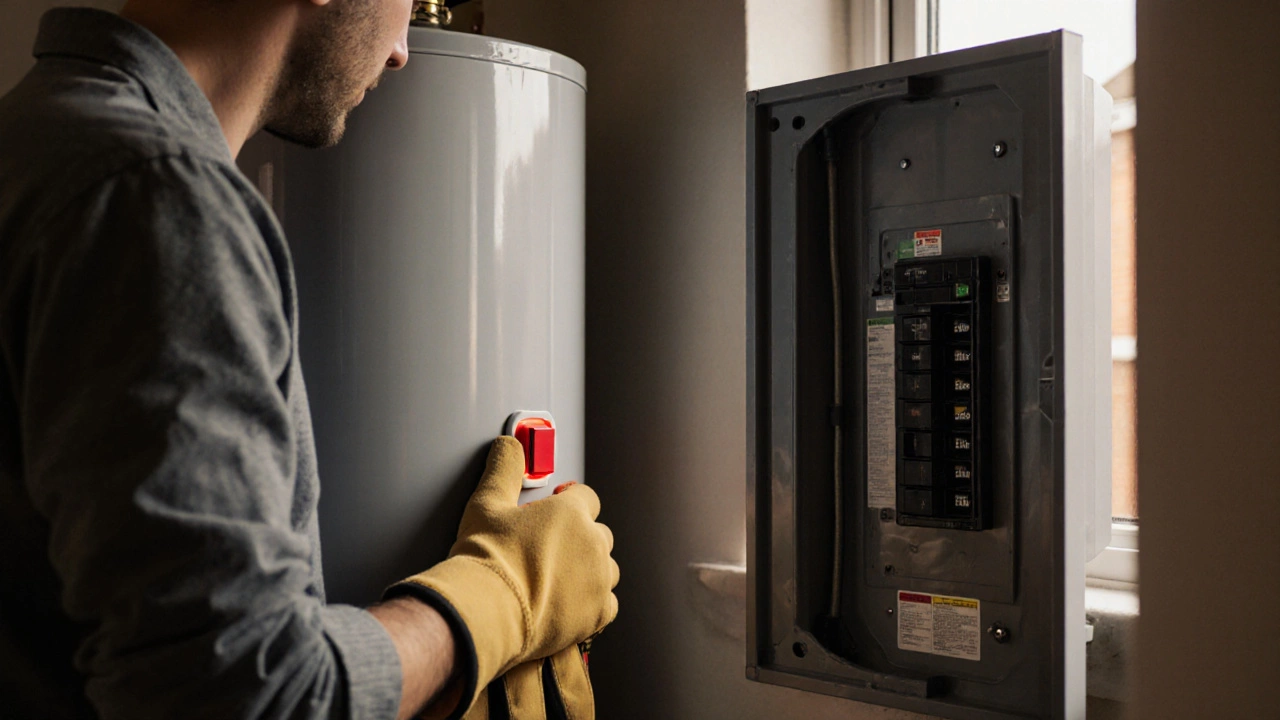When dealing with high limit switch, a safety device that stops a heating element or boiler when temperature gets too high, you’re looking at one of the most important guards in any hot‑air or hot‑water system. Also called a thermal cut‑out, it works hand‑in‑hand with boiler, a sealed unit that heats water for home heating and hot taps, heat pump, a device that moves heat from outside air or ground into the house and even oven, the kitchen appliance that uses electric or gas burners to bake food. All of these appliances also rely on a thermostat, a sensor that tells the system when to turn on or off to stay safe and efficient. In short, the high limit switch protects equipment by cutting power when temperature exceeds safe limits, which prevents damage and fire hazards.
Most homeowners first notice a problem when the boiler won’t fire, the heat pump stops blowing warm air, or the oven refuses to heat. Those symptoms often trace back to a tripped high limit switch. If the switch has opened, the system’s control board will register a fault code – something you’ll see in many of our boiler troubleshooting guides. You might also hear a clicking sound as the switch resets itself, only to open again a few minutes later. In a heat pump, a faulty switch can cause the compressor to overheat, leading to short cycling and higher energy bills. For ovens, a bad switch usually results in an “oven not heating” warning, which you’ll find discussed in our electric oven repair article. The common thread is that the switch is doing its job – stopping the heat – but it’s doing it at the wrong time.
Another clue is a lingering smell of burnt wiring or a faint metallic odor near the appliance. That indicates the switch may have welded shut, keeping the heating element live even when the temperature is already too high. Safety inspectors often recommend checking the high limit switch during routine boiler service, as we explain in the boiler service cost guide. When you replace or test the switch, you’ll typically need a multimeter to verify continuity. If the reading stays open at room temperature, the switch is likely bad and should be swapped out. The replacement part is inexpensive, but the labor cost can add up, especially if you need an experienced technician to access it inside a sealed boiler housing.
Understanding how the high limit switch interacts with other components helps you decide whether a DIY fix is feasible. For simple ovens, you can turn off the power, remove the rear panel, and test the switch with a multimeter – a task covered in our oven element replacement guide. Boilers and heat pumps, however, involve pressurized systems and sometimes gas lines, so it’s safer to call a qualified engineer. Knowing the difference saves you time, money, and the risk of voiding warranties. Below you’ll find articles ranging from step‑by‑step boiler diagnosis to heat pump compressor cost, each touching on how a high limit switch fits into the bigger picture of appliance safety and performance.

Learn when it's safe to press the water heater reset button, step‑by‑step instructions, common risks, and when to call a professional.

Wondering if your hot water heater is about to quit? This article breaks down the most common signs that your water heater needs to be replaced, from strange noises to rusty water. Find out how long these tanks usually last, what to look for during regular maintenance, and how to handle sudden issues. You'll get practical tips to keep your heater running smoothly and avoid a cold shower surprise. If you've ever worried about flooding, energy bills, or weird knocking, this is for you.

Exploring the value of repairing a freezer involves assessing various factors, such as the cost of repairs, the appliance's age, and the efficiency improvements of newer models. Understanding common freezer problems can help homeowners decide whether a repair is worthwhile. The decision should account for both economic and environmental perspectives, guiding when to repair or replace.

Understanding what usually fails in a fridge can save you time and money. This article explores common issues like malfunctioning thermostats, compressor problems, and leaky seals. Learn helpful tips for diagnosing and possibly fixing these issues yourself. Knowing when to call a professional is also crucial in the life of your fridge.

Extractor fans are a lifesaver when it comes to clearing out steam, smoke, and nasty odors, but many people forget they actually need a little love now and then. This article cracks open the question of whether extractor fans need maintenance, and if so, what kind and how often. We'll cover quick tips, warning signs, and busted myths around fan care. Get the straightforward facts (and a few surprises) about keeping your fan working its best. No nonsense, just super practical info you can use right now.

Wondering if you can still use your oven with a broken heating element? This article breaks down what actually happens when the heating element fails and what your options are. Learn about safety concerns, possible workarounds, and when it’s smarter just to fix it instead of limping along. Get tips on recognizing a bad element and ideas for a cheap, fast repair. Find out what really works and what won’t, straight from someone who’s fixed more than a few ovens themselves.